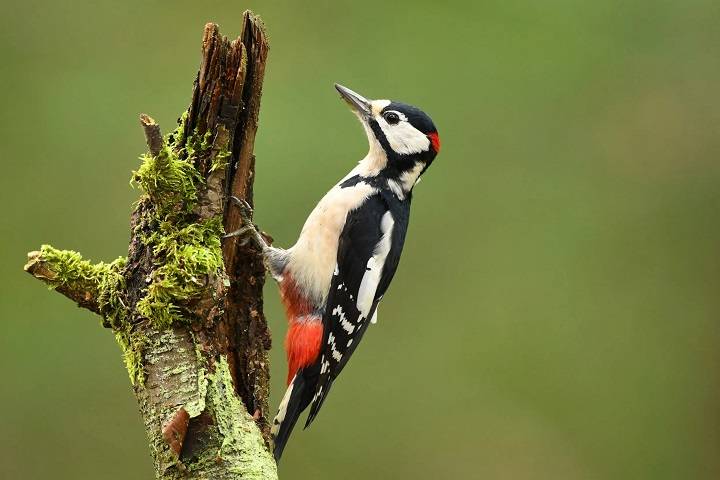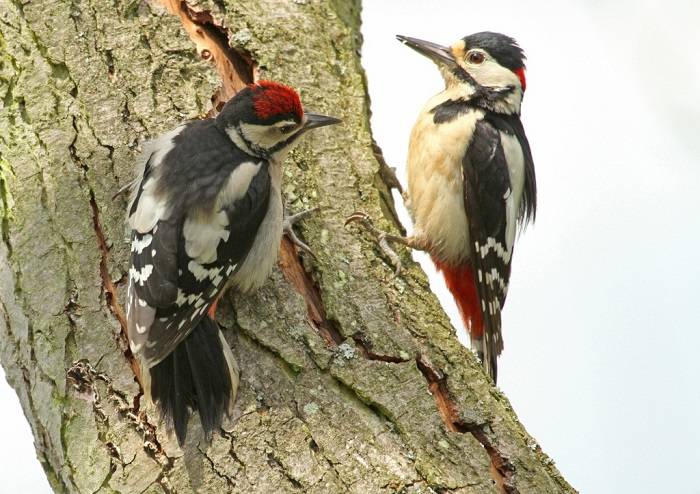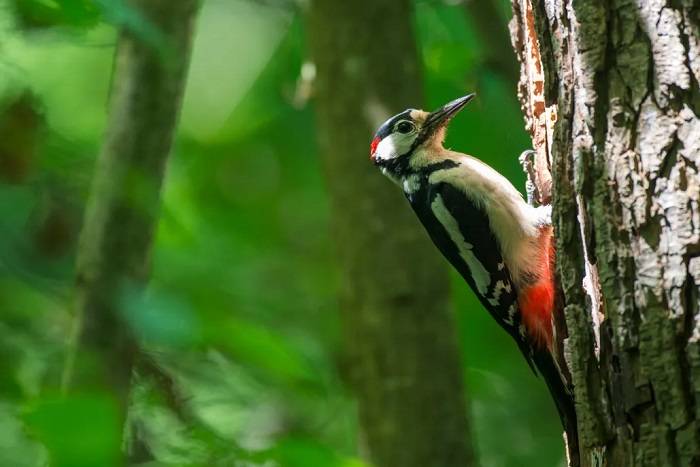The Lesser Spotted Woodpecker (Dryobates minor) is a diminutive yet charismatic bird that can be found in woodlands, parks, and gardens across the United Kingdom. Despite its small size, this elusive species captivates birdwatchers with its distinctive drumming and acrobatic foraging behavior. In this comprehensive guide, we will delve into the fascinating world of the Lesser Spotted Woodpecker, exploring its habitat, behavior, breeding biology, conservation status, and tips for spotting this elusive bird in the wild.
The Lesser Spotted Woodpecker
The Lesser Spotted Woodpecker is one of the smallest and least conspicuous members of the woodpecker family in the UK. Measuring around 14 centimeters in length, it sports striking black and white plumage with subtle red markings on the head of the male. Despite its diminutive size, this agile woodpecker possesses a powerful bill and tongue adapted for extracting insects from tree bark.
Habitat and Distribution:
Lesser Spotted Woodpeckers inhabit a variety of woodland habitats, including deciduous and mixed woodlands, parks, orchards, and mature gardens. They have a preference for woodlands with a diverse structure, characterized by a mixture of mature trees, deadwood, and understory vegetation. In the UK, they are distributed mainly in England and Wales, with fewer sightings reported in Scotland and Northern Ireland.
Identification
Identifying Lesser Spotted Woodpeckers can be challenging due to their small size and secretive nature. However, there are several key features to look out for:
- Black and white plumage with prominent black-and-white barring on the back.
- Males have a red crown, while females have a black crown with white spots.
- Short, pointed tail.
- Undulating flight pattern.
- Distinctive drumming sound, often described as a rapid “tat-tat-tat-tat.”
Behavior and Foraging Ecology
Lesser Spotted Woodpeckers are primarily insectivorous, feeding on a variety of insects, larvae, and spiders found beneath the bark of trees. They use their chisel-like bill to excavate small holes in the bark, probing for hidden prey with their long, barbed tongue. Unlike their larger relatives, such as the Great Spotted Woodpecker, Lesser Spotted Woodpeckers tend to forage lower down on tree trunks and branches, often in the company of tits and other small birds.
Breeding Biology
Breeding season for Lesser Spotted Woodpeckers typically begins in late April to May, coinciding with the emergence of insects and the availability of suitable nesting sites. They excavate their nest holes in dead or decaying trees, often choosing trees with soft wood such as willow, poplar, or birch. The female lays a clutch of 4-7 glossy white eggs, which are incubated by both parents for around 12-14 days. After hatching, the chicks are fed a diet of insects and larvae until they fledge at around 20-24 days old.
Conservation Status
The Lesser Spotted Woodpecker is classified as a species of conservation concern in the UK due to declines in population numbers and habitat loss. Factors such as habitat fragmentation, woodland management practices, and competition with other cavity-nesting species have contributed to their decline. Conservation efforts focused on preserving and enhancing woodland habitats, creating suitable nesting sites, and promoting sustainable forestry practices are essential for the long-term survival of this species.
Tips for Spotting Lesser Spotted Woodpeckers
Spotting a Lesser Spotted Woodpecker in the wild requires patience, keen observation skills, and a bit of luck. Here are some tips to increase your chances of encountering this elusive bird:
- Visit Woodland Habitats: Lesser Spotted Woodpeckers are most commonly found in woodlands with a diverse structure, including mature trees, deadwood, and understory vegetation. Look for them in areas with plenty of old trees and dense vegetation.
- Listen for Their Drumming: During the breeding season, male Lesser Spotted Woodpeckers drum on dead branches to establish territories and attract mates. Listen for their distinctive drumming sound, which is softer and faster than that of larger woodpecker species.
- Scan Tree Trunks and Branches: Lesser Spotted Woodpeckers forage actively on tree trunks and branches, probing for insects beneath the bark. Use binoculars to scan the canopy and look for movement or small holes in the bark where they have been feeding.
- Be Patient and Observant: Lesser Spotted Woodpeckers are shy and elusive birds that can be easily overlooked. Spend time observing the woodland environment, paying attention to any movement or unusual sounds that may indicate their presence.
- Visit Birding Hotspots: Some nature reserves, parks, and woodland areas are known to be reliable locations for spotting Lesser Spotted Woodpeckers. Research local birding hotspots in your area and visit during the early morning or late afternoon when birds are most active.
Lesser Spotted Woodpecker Uk
Related Post:
Ugly Bird Species: Ugliest Birds in the World
White Bird Species: Get Detail Biography
Big Blue Bird Species: Surprising Unknown Facts
The Lesser Spotted Woodpecker may be small in size, but it possesses a charm and charisma that captivates birdwatchers and nature enthusiasts alike. With its distinctive appearance, acrobatic foraging behavior, and melodic drumming, this elusive bird adds a touch of magic to woodlands and gardens across the UK. By understanding its habitat requirements, behavior, and conservation needs, we can all play a part in ensuring the continued survival of this enchanting woodland dweller for generations to come.




